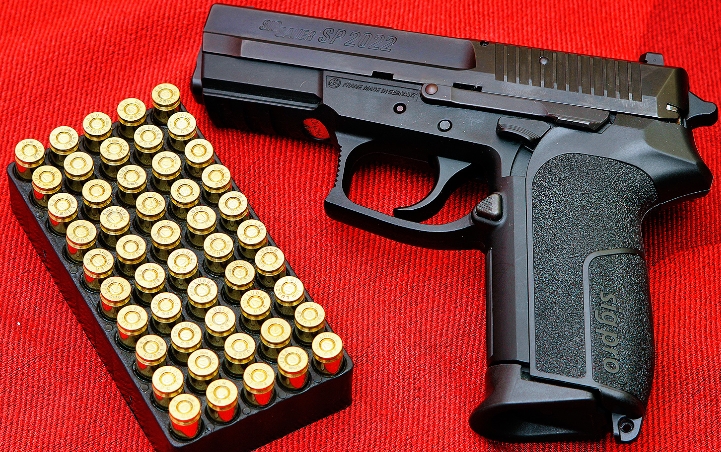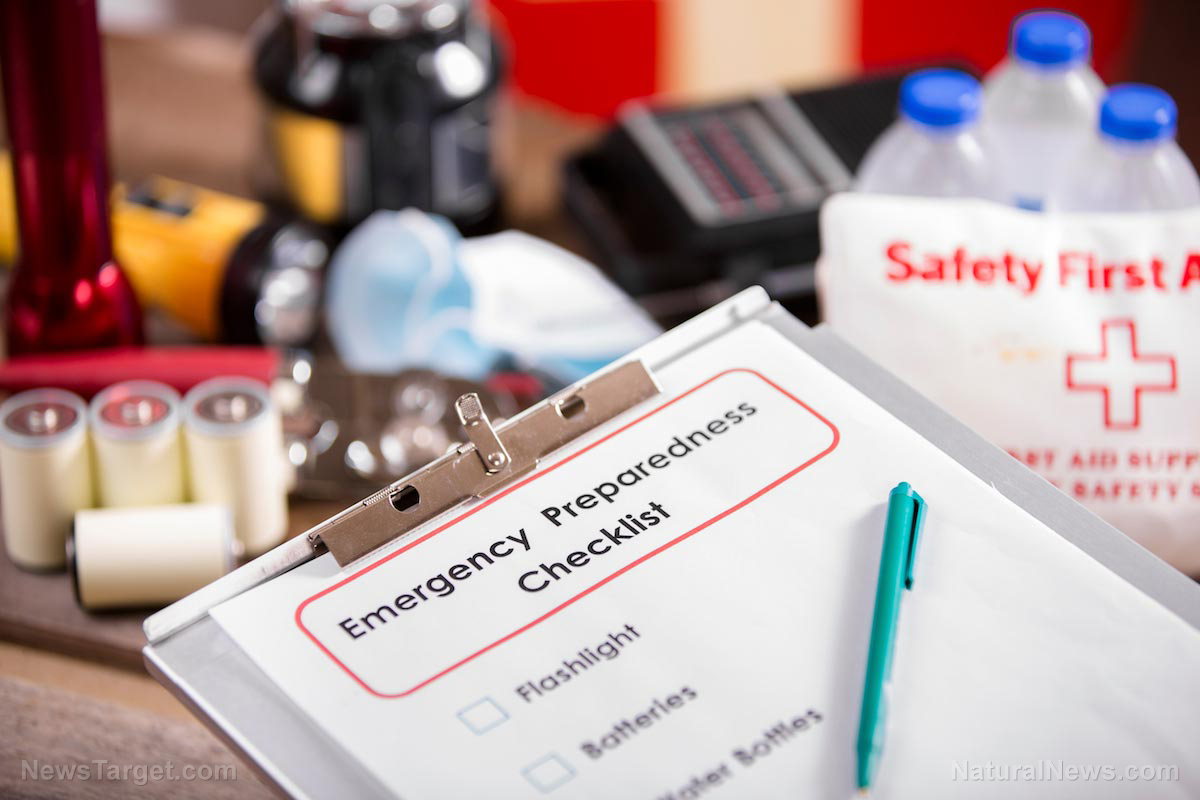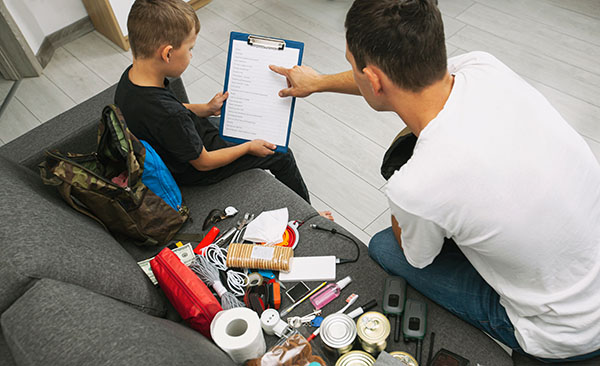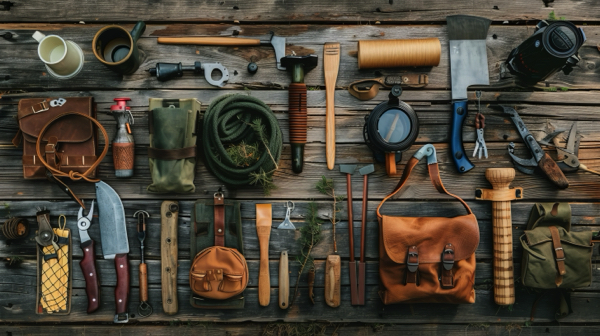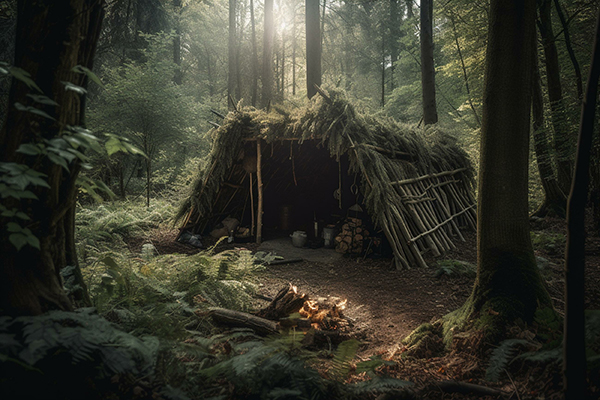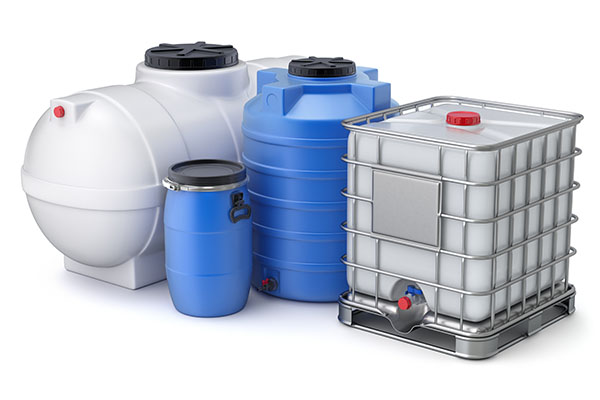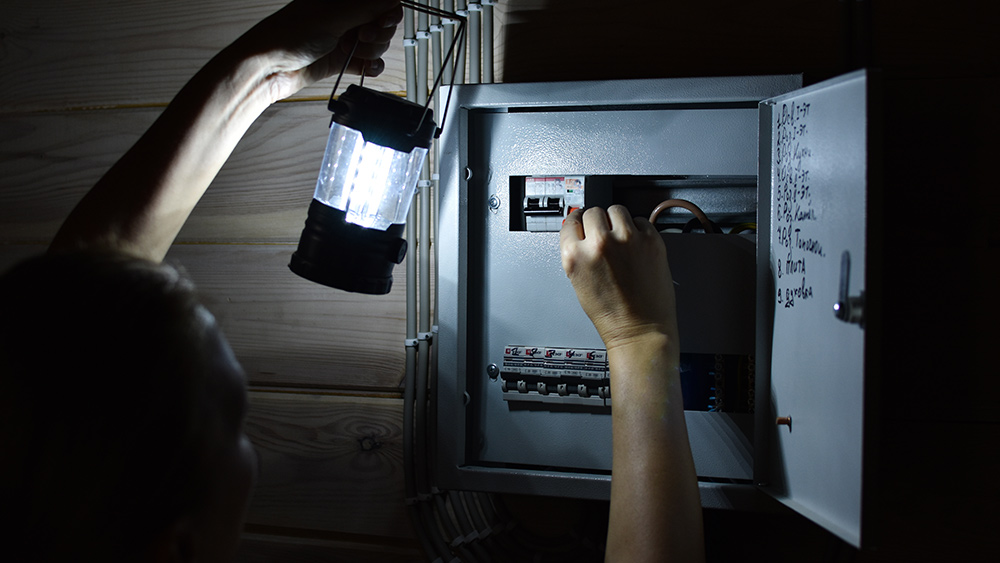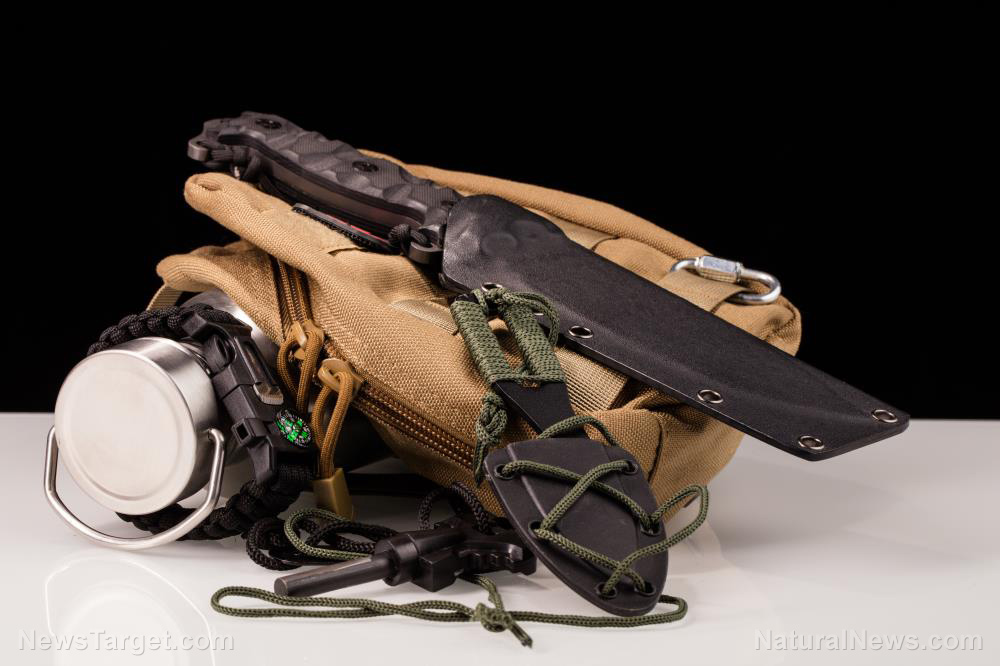Prepare for an EMP attack with these cheap, life-saving items
04/30/2025 / By Zoey Sky
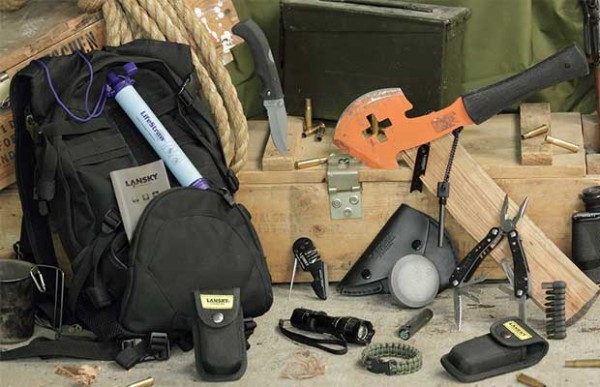
- Preparing for an EMP attack doesn’t have to be expensive. Being ready now can mean the difference between chaos and survival when disaster strikes.
- Stock up on battery-powered flashlights, extra batteries and hand-crank devices (radios, flashlights) since they don’t rely on vulnerable electronics.
- Use cast iron cookware and charcoal grills for cooking without electricity. A Dutch oven allows slow cooking while minimizing smoke.
- Shield critical devices (radios, solar chargers) in a Faraday cage to block damaging radiation. Stock first-aid kits with essential supplies and extra prescription medications. Include tourniquets and mylar blankets for severe injuries.
- Hand tools will replace power tools. Maps and a compass are vital when GPS fails. Water filters ensure safe drinking water for your family.
An electromagnetic pulse (EMP) attack or a solar storm-generated geomagnetic storm could plunge modern society into chaos, crippling power grids, communications and critical infrastructure. With many electronics and appliances destroyed by intense electromagnetic radiation, everyday life would grind to a halt, potentially for years.
But not all hope is lost.
Experts emphasize that even on a budget, ordinary people can gather affordable tools and supplies to survive an EMP attack and weather the storm. Here’s a guide to the top inexpensive items that could mean the difference between chaos and resilience. (h/t to AskAPrepper.com)
Batteries and simple flashlights: The ultimate EMP-ready light source
When the power grid fails, things you take for granted, like lights, become a luxury. Basic battery-powered flashlights and headlamps are some of the cheapest and most reliable tools to illuminate your home.
Unlike USB rechargeable devices (which depend on microchip-based chargers vulnerable to EMP damage), simple flashlights with non-rechargeable alkaline batteries often survive the blast. Stock up on durable models and replace batteries every year or two to ensure longevity.
Discount stores sell multi-packs of AAA and AA batteries for under $2 per pack. Pair them with sturdy flashlights like the classic Maglite or wind-up lanterns.
Cast iron cookware and charcoal grills: Cooking after the grid goes dark
Forget electric stoves. Post-EMP, you’ll need to cook outdoors.
A reliable charcoal grill and cast iron pans allow you to boil water, roast meat and fry vegetables without electricity. Porcelain-coated cast iron skillets are ideal since they handle high heat, resist rust and can function in damp conditions.
Meanwhile, a Dutch oven buried in hot coals lets you slow-cook meals invisibly, avoiding smoke that might attract trouble.
Cast iron lasts forever and costs as little as $20 for a pan. A basic grill can be found second-hand for $30 to $50.
Faraday structures or EMP cloths: Shield electronics for long-term survival
A Faraday cage, or any sealed metallic enclosure like a metal garbage can, blocks EMP radiation from reaching sensitive electronics. Turn an old metal garbage can into a shielded storage unit by lining it with non-conductive tape or wrapping devices in aluminum foil.
For a smarter option, invest in EMP cloths (woven copper-mesh fabric) that protect gadgets from all three phases of an EMP. These fabrics cost under $50 and can fold into compact bags for electronics like solar chargers or two-way radios.
Alternatively, you can line a large metal toolbox with duct tape and store essentials like a solar-powered radio or walkie-talkies inside.
First aid kits and prescription medications: Treat injuries when hospitals can’t
In an EMP’s aftermath, hospitals may shut down. A well-stocked first-aid kit should include antiseptics, bandages, burn cream and splint materials.
Pair it with affordable over-the-counter medications like ibuprofen, antihistamines and antidiarrheal pills. Stockpile these basics at dollar stores or buy in bulk online, often for under $10 per month. (Related: Preparing for the unexpected: Tips for building an apartment emergency kit.)
If someone in the family has chronic health conditions like asthma or diabetes, ask their doctor if they can stock up on medication. You can tell them that you are taking a long trip if they ask why you need them.
Include a tourniquet and gauze pads for severe bleeding, and mylar space blankets to combat hypothermia.
Hand tools: Power tools fail, but your hands won’t
When the power grid is gone, muscle power becomes your greatest asset.
Invest in a set of basic hand tools:
- Axes and hatchets – These are essential for chopping wood and hacking through obstacles.
- Hammers and screwdrivers – Critical for repairs and construction.
- Handsaws – To cut lumber, metal or bone (for butchering animals for food).
If you prefer something compact, invest in a well-constructed multi-tool, like a Leatherman or Victorinox, that has multiple functions in a single affordable package.
Hand-crank devices: Power on a shoestring
These low-tech gadgets avoid microchips entirely, relying instead on human energy:
- Hand-crank flashlights – These are handy if you need a modest amount of light for a quick task and you don’t want to use up your batteries.
- Hand-crank radios – Stay informed with a hand-crank NOAA weather radio (some are under $40).
- Hand-crank water pumps – Use a hand-crank water pump to extract water from wells or cisterns with a manual pump.
Some crank devices can also charge phones via USB, which is great for protecting small electronics.
Water purification: Life-saving filters at a fraction of the cost
Contaminated water kills faster than most disasters. Affordable options like Sawyer Mini filters ($30) and
purification tablets ($30 for 100 tablets) keep you hydrated.
Collect rainwater in heavy-duty tarps and boil it using a portable stove.
For long-term storage, invest in a gravity-fed water filtration system, which you can build from a 55-gallon drum and tubing, for less than $200.
Maps and compass: Navigate when the GPS is gone
Post-EMP, roads could be blocked by stalled cars. A topographical map of your region (available online for free) and an orienteering compass (under $20) help you plot paths away from danger.
Practice navigation skills now and learn about combining landmarks, sun direction and elevation changes to find your way if you get lost.
The Sawzall: A worthwhile splurge for survival efficiency
A quality reciprocating saw (or “Sawzall”) cuts through wood, metal and bone, saving time and calories. Choose a 12-amp model with a basic charger (avoid smart chargers with chips).
For $100-150, you get a versatile tool for demolition, construction and even butchering game meat.
EMP readiness doesn’t need to empty your wallet. Begin with basics like batteries, first aid and a Faraday pouch.
Gradually add tools and supplies, focusing on durability over luxury. As experts suggest, even a backyard solar panel or simple rainwater catchment system can boost your resilience when SHTF.
Protect your family by staying vigilant. Always stay ready and stay safe.
Visit Survival.news for more articles on how to prepare for an EMP attack. You can also check out Health Ranger Store and Brighteon Store for more clean food supplies for your prepping needs.
Watch the video below to learn about Freeze-Dried Organic Miso and why you need it in your survival stockpile.
This video is from the Health Ranger Store channel on Brighteon.com.
More related stories:
Vacuum sealers: The budget-friendly secret to cutting grocery bills and prepping for emergencies.
EMP preparedness: How to protect your electronics.
Why essential oils are must-have barter items when SHTF.
Baking Soda: The ultimate multi-purpose survival remedy for health, home, and emergency prep.
Sources include:
Submit a correction >>
Tagged Under:
Collapse, disaster, electromagnetic pulse, electronics, emergency preparedness, EMP, Gear, hand tools, homesteading, how-to, off grid, preparedness, prepper, prepping, prepping supplies, SHTF, survival, survival gear, survival supplies, tips, water filter
This article may contain statements that reflect the opinion of the author
RECENT NEWS & ARTICLES
COPYRIGHT © 2018 SURVIVALGEAR.NEWS
All content posted on this site is protected under Free Speech. SurvivalGear.news is not responsible for content written by contributing authors. The information on this site is provided for educational and entertainment purposes only. It is not intended as a substitute for professional advice of any kind. SurvivalGear.news assumes no responsibility for the use or misuse of this material. All trademarks, registered trademarks and service marks mentioned on this site are the property of their respective owners.

